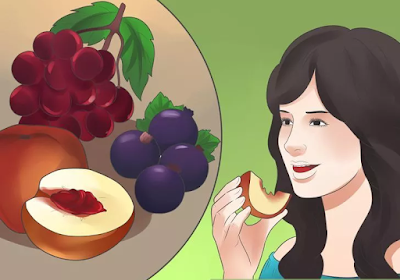It's
possible to suffer from both gout and diabetes at the same time. People with
both gout and diabetes are advised to avoid foods that may affect the levels of
uric acid and insulin in the body. Therefore, recommended diets for this group
focus on lowering both uric acid and blood sugar levels.
1 Avoid purine-rich foods. Since uric acid is produced from the
metabolism of purine in the body, it is best to avoid foods that contain
purine. Urate crystals accumulate in the joints if uric acid is elevated and
this can aggravate joint pain in gout.
§ Also, uric acid elevation can increase insulin
resistance which is a condition wherein the body do not respond to the function
of insulin. This can further elevate the blood sugar levels of a person,
leading to diabetic symptoms.
§ Purine-rich foods are mackerel, anchovies,
organ meats, dried beans, peas, canned goods, instant noodles, wine and beer.
2 Avoid foods rich in fructose. Foods rich in fructose consume a lot of
adenosine triphosphate (or ATP) when metabolized. This ATP is an
energy-supplying molecule that the cells in the body use. Over-consumption of
ATP leads to its depletion and results in the generation of substances such as
lactic acid and uric acid, thereby increasing the levels of uric acid in the
blood.
§ Also, fructose is considered a sugar.
Consuming foods rich in fructose can elevate the blood sugar of a person and
lead to occurrence of symptoms.
§ Foods to avoid are apples, bananas, pears,
agave, melons, asparagus, beans, broccoli, cabbage, onion, tomato, peanuts,
raisins, figs, carbonated drinks, fruit drinks, ketchup, canned goods,
chocolate, pastries and breakfast cereals.
3 Avoid alcohol. Alcohol interferes with the removal of
uric acid from the body. When alcohol is converted to lactic acid, it reduces
the amount of uric acid that is eliminated from the body through the kidneys.
This is because the lactic acid competes with the uric acid in terms of being
removed by the kidneys through urine.
§ Increased levels of ethanol (alcohol) in the
body increase the body's production of uric acid by increasing the amount of
ATP (Adenosine triphosphate) that is converted to AMP (Adenosine monophosphate)
- a precursor of uric acid.
§ Also, alcohol can affect the body’s
sensitivity to insulin.
4 Eat high-fiber foods. Dietary fiber absorbs uric acid in the
bloodstream, allowing it to be eliminated from the body through the kidneys.
Also, pectin (which is a type of soluble fiber) lowers cholesterol by absorbing
t from the body.
§ High levels of cholesterol in the body can
increase the blood pressure and can lead to the occurrence of diabetic
symptoms.
§ Include at least one high-fiber food in each
major meal or snacks such as pineapple, oats, isabgol, cucumbers, oranges,
barley, carrots and celery. The ideal daily intake is 21 grams.
5 Eat foods rich in anthocyanins. Anthocyanins prevent the crystallization
of uric acid and also prevent it from being deposited in the joints. Also,
anthocyanins encourage hypoglycemic activity that may help to lower blood
sugar.
§ Foods rich in anthocyanins are eggplant,
blueberries, cranberries, plums, black currant, grapes, pomegranates, red
fleshed peaches and cherries.
§ You should include at least one of these foods
in each major meal or snack.
6 Eat foods rich in omega-3 fats. Increasing your intake of omega-3 fatty
acids can help reduce insulin resistance (a condition where the body is able to
produce insulin but it is not used effectively), thereby reducing the risk or
severity of type 2 diabetes.
§ Also, the eicosa pentanoic acid (EPA) in
omega-3 fatty acids can reduce the levels of cholesterol and uric acid. The
recommended dose for omega-3 fatty acids is not more than 3 grams daily.
§ Foods rich in omega-3 fatty acids are
sardines, salmon, soybeans, flax seeds, walnuts, tofu, brussels sprouts,
cauliflower, shrimp and winter squash.






Không có nhận xét nào:
Đăng nhận xét